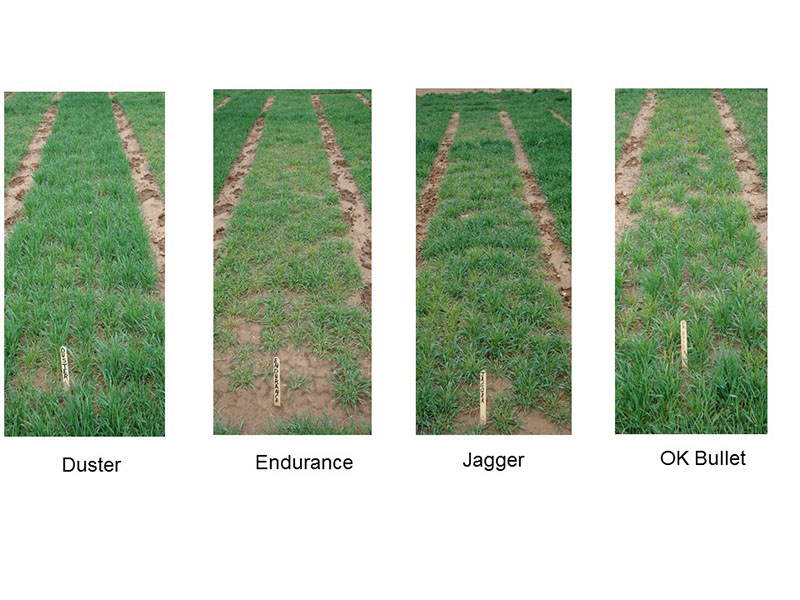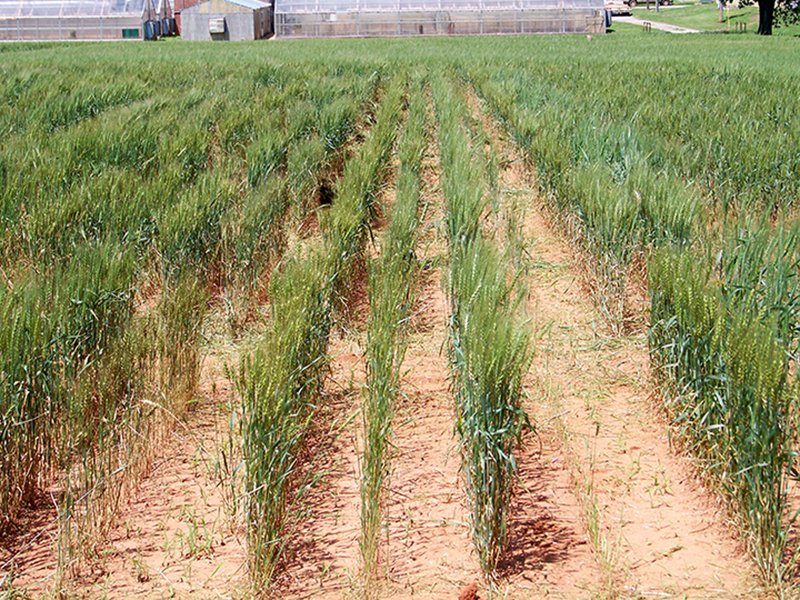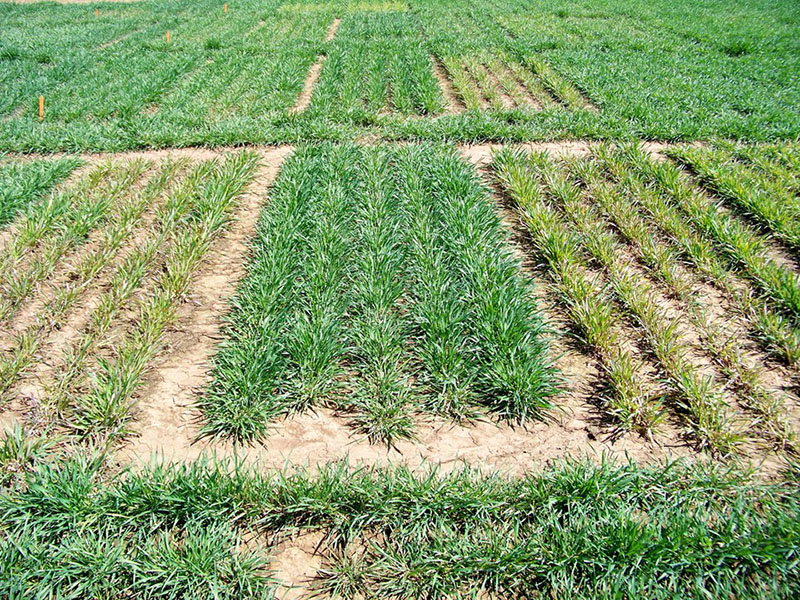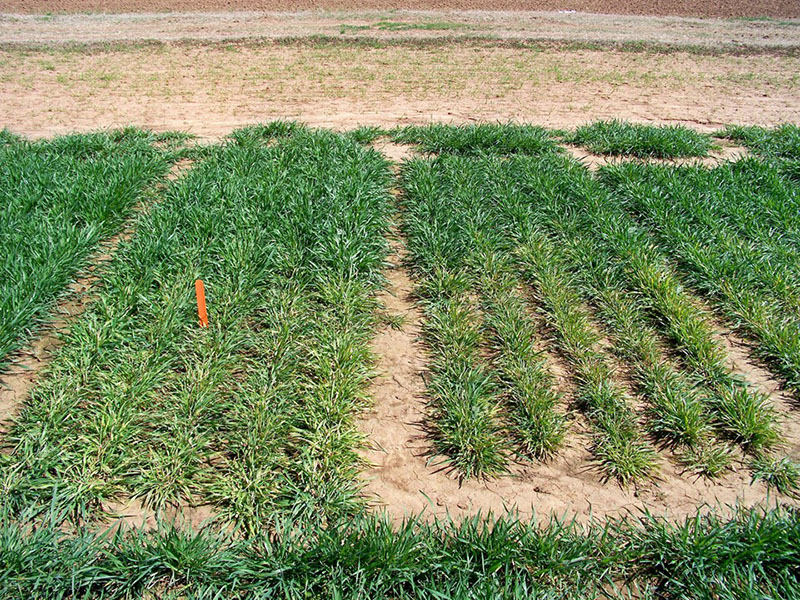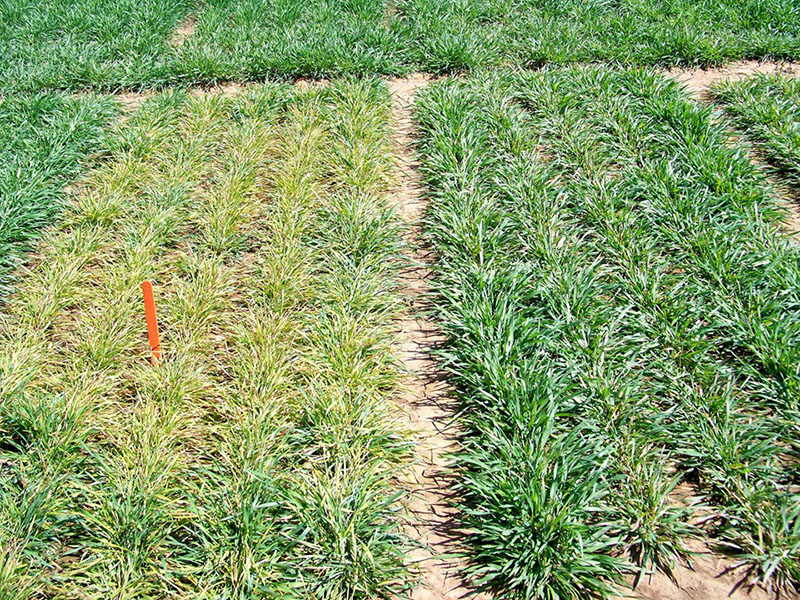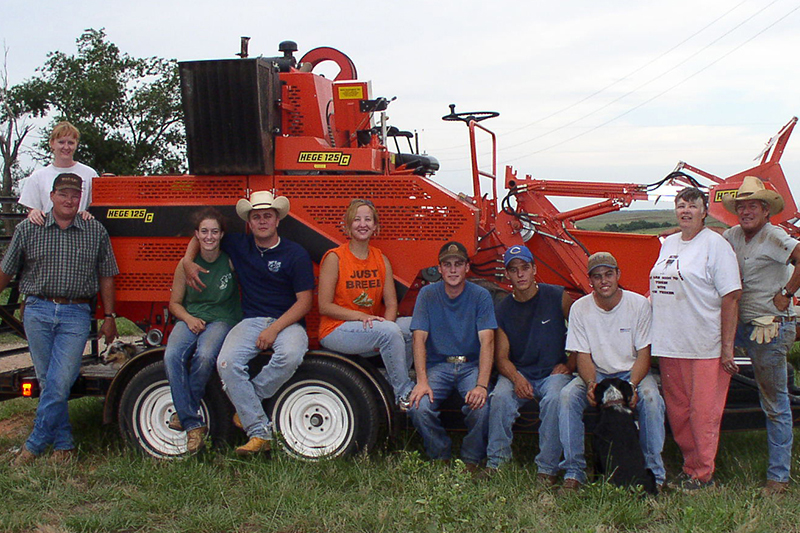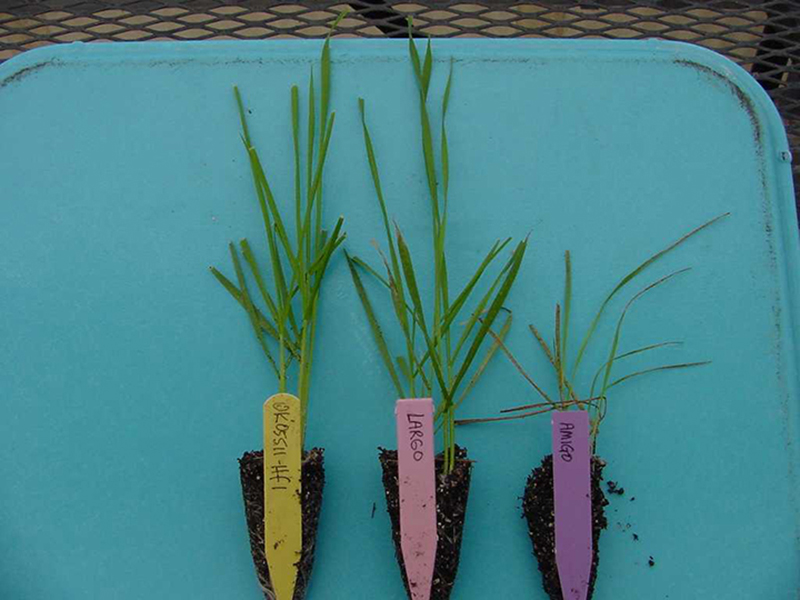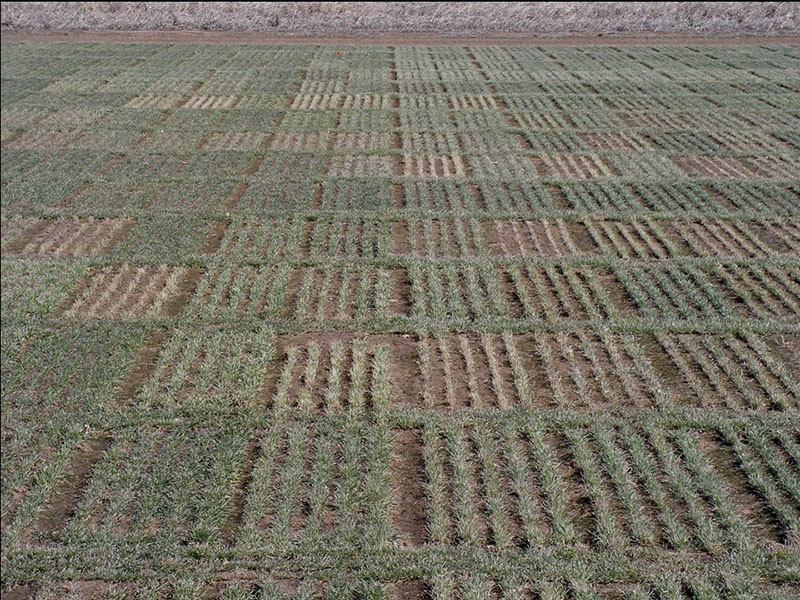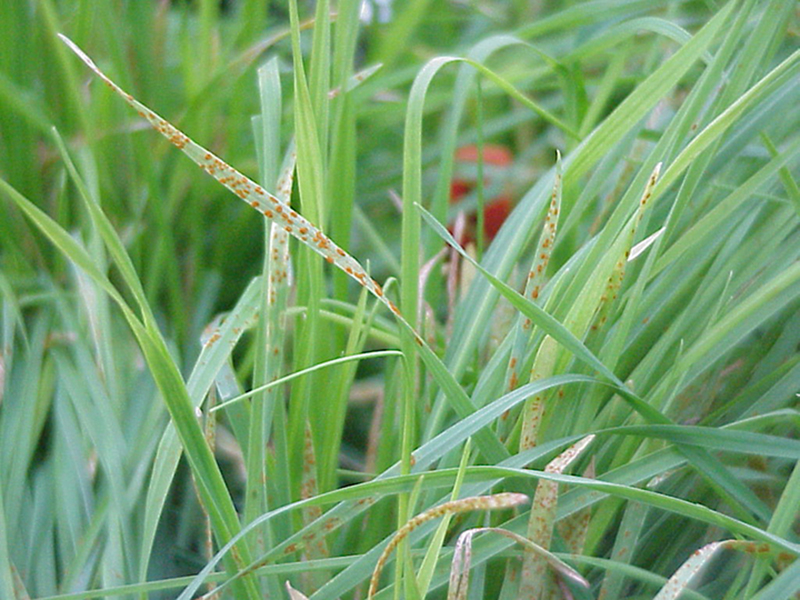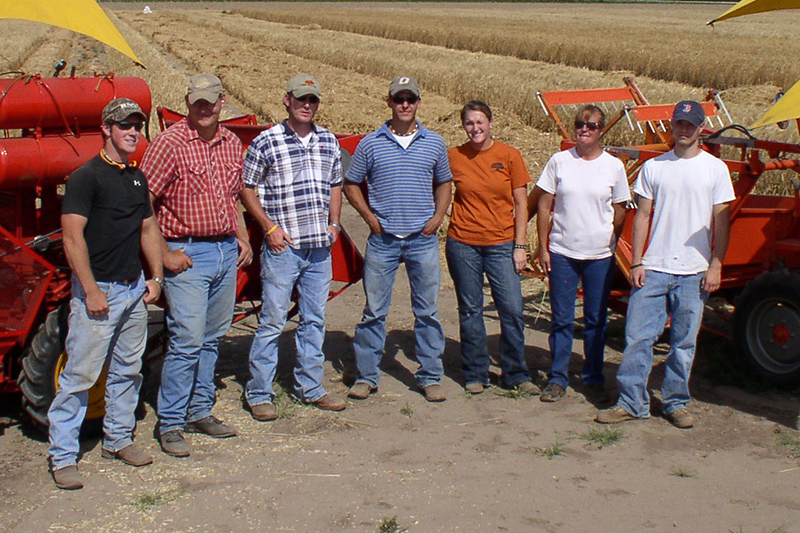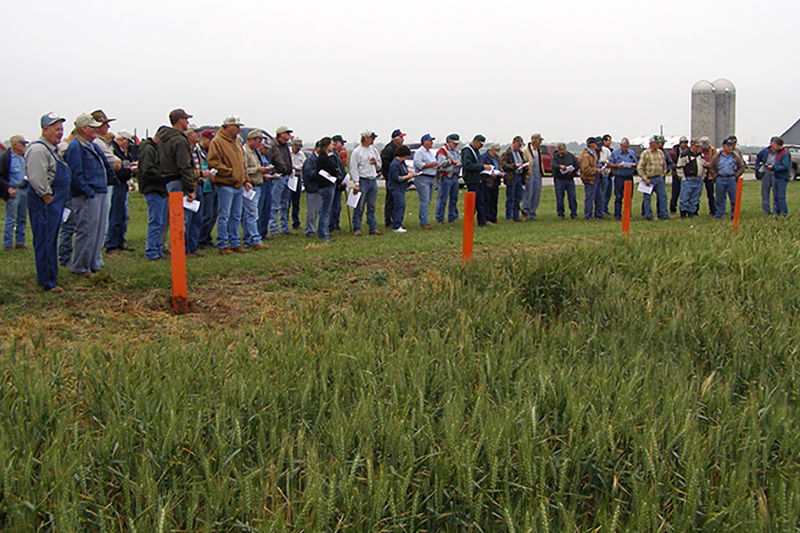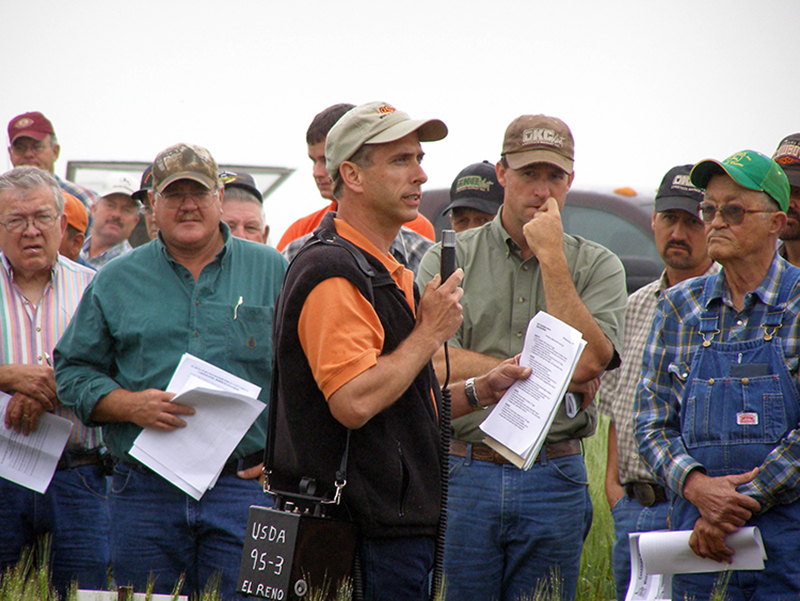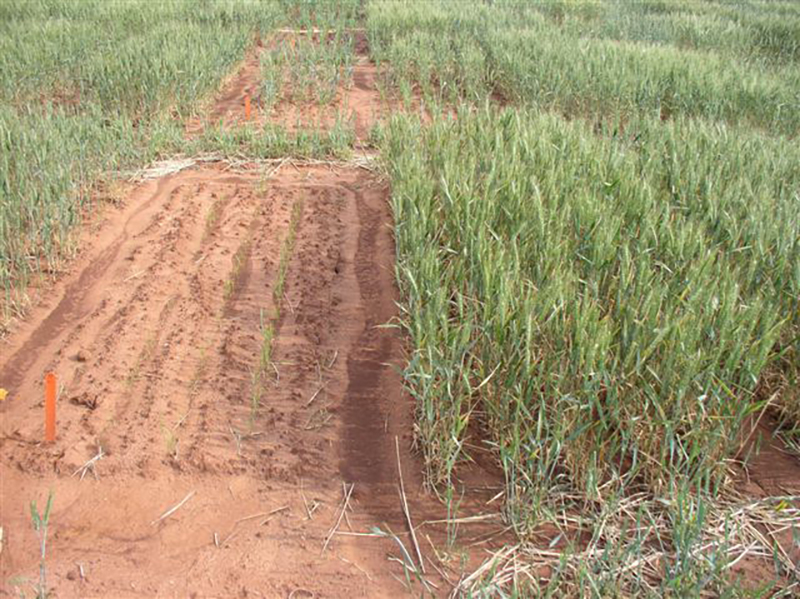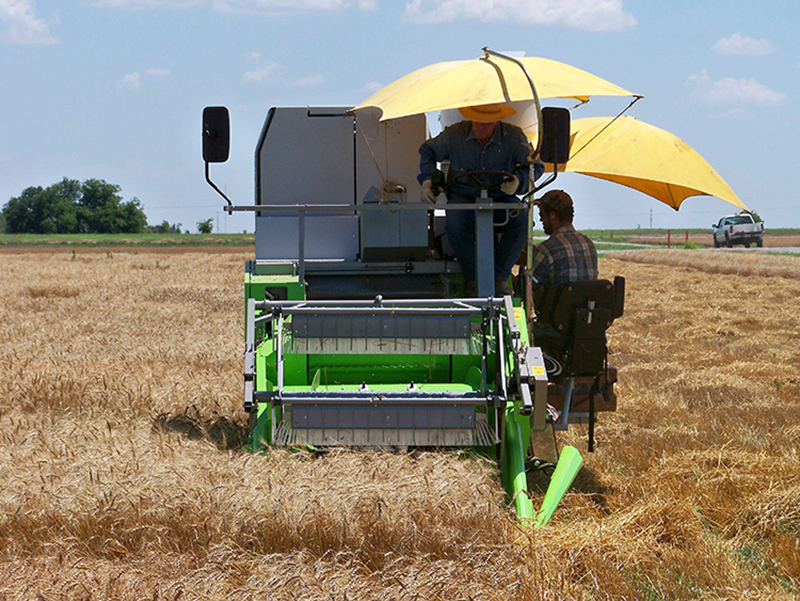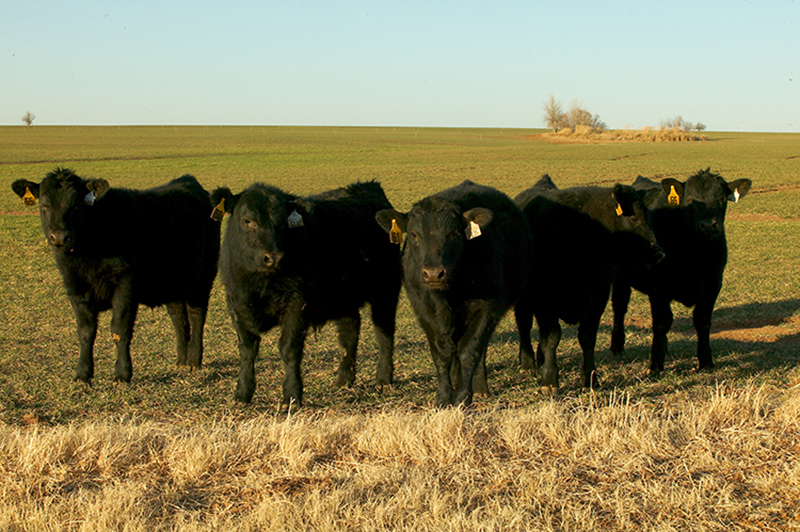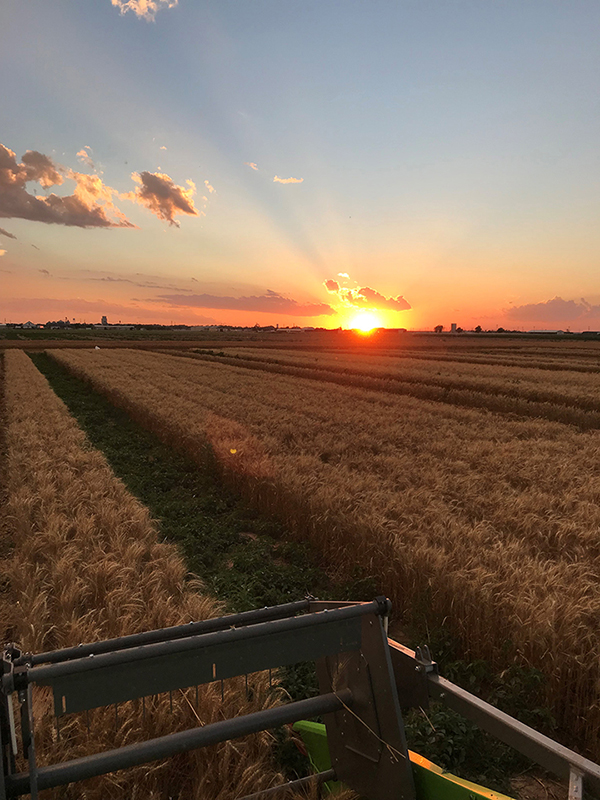Wheat Improvement Team
About the program
Wheat Improvement research in Oklahoma is driven by an interdisciplinary team of scientists
housed in OSU's Division of Agricultural Sciences and Natural Resources, charged with
developing highly-adapted winter wheat cultivars with marketable grain-quality. This team is committed to strengthening the Oklahoma
wheat industry by enhancing its genetic resources, a mission that could not be accomplished
without contributions from other state, federal, and private researchers.
Wheat Breeding
Program support is administered by the Oklahoma Agricultural Experiment Station (OAES)
through the Department of Plant and Soil Sciences. Funding is derived from a partnership between the OAES, the Oklahoma Wheat Commission, and the Oklahoma Wheat Research Foundation. This partnership ensures linkage of
the Wheat Improvement Program to the collective needs of Oklahoma's wheat industry.
Scientists located at the USDA-ARS Plant Science and Water Conservation Research Laboratory
conduct genetic investigations critical to the program.
Program direction is provided by the OSU Wheat Genetics Chair, currently occupied
by Brett F. Carver. The original occupant of the Chair was Edward L. Smith, from 1989
to 1997.
2022 Wheat Breeding Test Sites
Adaptions and Traits
GrazenGrain
GrazenGrain™ designates an OSU wheat variety developed under a designed breeding system that imparts selection pressure for adaptation to early-planted, stocker-cattle grazed systems. This adaptation generally leads to higher grain production following the grazing period. Most varieties released by the Oklahoma Agricultural Experiment Station since 2004 will carry this distinction and are available for licensing, primarily through Oklahoma Genetics, Inc.Target Traits
Agronomic research goals emphasize improving protection against 14 or more fungal or viral diseases and four insect species, tolerance to drought and low-pH, Al-toxic soils, and manipulation of developmental factors which influence arrival time at specific growth stages. Emphasis on grain quality has traditionally focused on physical kernel characteristics and breadmaking quality, but the arrival of hard white wheat to the southern Great Plains has turned our attention to a new set of traits, such as kernel color, pre-harvest sprout tolerance, and tortilla quality. Parts of the GrazenGrain™ breeding system were implemented beginning in 1997, but by 2004, more than 80% of the OSU breeding populations were subjected to this system.Wheat Improvement Team




